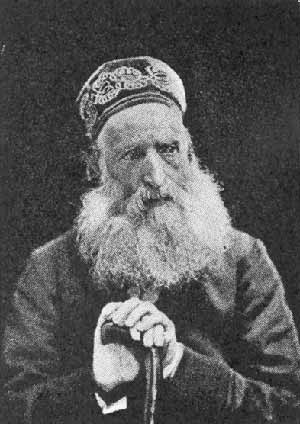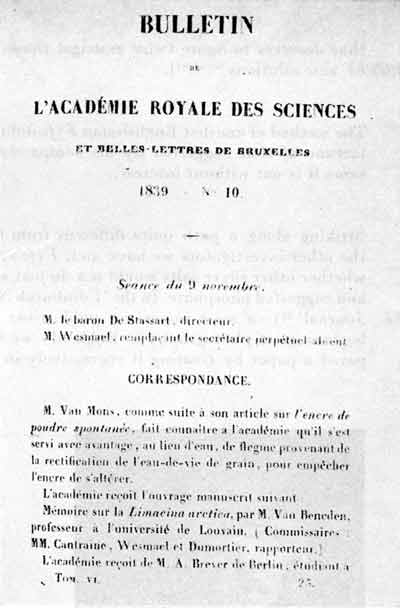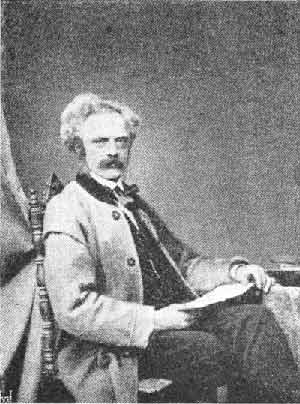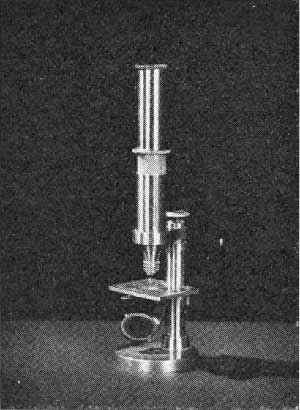Articles by Pierre G. Harmant
Anno Lucis 1839 (3/3)
Eighteen hundred and thirty nine
Anecdotal history of photography by Pierre G. Harmant
Keeper of records of the Société Française de Photographie
III. The new solutions
The reader may be surprised to see the name of Sir John Herschel in the list of new solutions. But I think there are two good reasons for the choice.
In the learned publication mentioned in the foregoing he described the power to dissolve silver halides possessed by certain alkali salts of the hyposulphuric acid he had recently discovered. But for his property, there is no doubt that there would be no modern photography. Of course, it can be argued that there are other solvents of silver salts, such as potassium cyanide and ammonia in certain cases; be that as it may, it is hyposulphite that we still use today just as in 1839.
Very early in the month of January Herschel took an interest in Daguerre's process. In his laboratory 'Diary' he made brief notes of what he did and, since these texts are still unpublished, I can only give selected extracts 48. On January 29 49, he follows the line taken by his predecessors, Talbot in particular, and used silver carbonate. He obtained pictures and on 30th, a memorable day, he thought of using hyposulphite of soda (sodium thiosulphate) 'to fix the action of the light and get rid of all the silver chloride or other silver salts'... and he succeeded!
The simple text thus gives us the date, hitherto much debated, of the first use of a solvent of silver salts as a fixer 50. It will, I think, bring agreement among the historians for whom this was always a point at issue 51. The same day he obtained a picture of his famous telescope. And then, to round off his contribution, he coined a new term which was to become a household word: on February 13, still in his 'Diary', the word 'photography' appeared for the first time whereas, ever since Stenger, it has been thought that the word had come from the pen of the German Maedler on February 28. It is a minor point, no doubt, but one worth mentioning in this connection 52.
Who were the men who, having obtained a picture, suggested a way of stabilizing it? The first place in the chronological order goes, it would seem, to the Rev. J. B. Reade.
In 1837, it occurred to this venerable clergyman, who was interested in work with the microscope, to use the properties of silver salts in order to make a copy of what he saw with his eyes. In a letter of March 9, 1839, to Brayley 53 he discloses that 'these delineations are fixed with hyposulphite of soda'. This extremely important letter has some exciting things to tell us.

Mungo Ponton
Thus Reade was making current use of the hyposulphite which Sir John Herschel had only just suggested to Talbot on February 28!
A third figure has never emerged from the shadows. Daguerre is know to have originally fixed his pictures with a concentrated soluton of common salt and, after the publication of his 'Manual', the salt was replaced by hyposulphite 'because it removes the iodine completely and this is not always the case with the common salt...' Daguerre may have read the letter from Talbot to Biot (meeting of the Académie des Sciences on March 4) or perhaps the article on the communication of the Steinheil and Kobell process to the Bavarian Academy of Sciences on April 13... Unless the person I see as Daguerre's good genius whispered it in his ear.
We must remember that J. B. Dumas (Member of the Académie des Sciences) was at that time bringing out a monumental "Traité de Chimie Industrielle' and that as a result of his own documentation he could not help but know what was going on outside France. He knew in particular the properties of hyposulphuric acid and its salts after reading the works of Herschel. Why should it be supposed that Dumas acted any differently towards Daguerre from the way in which Herschel had acted towards Talbot? Strange to say, I have read in a German scientific review that Dumas had recalled the use of hyposulphite of soda as a solvent of silver salts. This makes me think that I have somewhere missed a French source of the very highest importance... 54.
Herschel, Reade, Dumas supplied what was missing in photography to make it almost complete: what we term fixing. They supplied new solutions to the problem.
In an entirely different field, three Frenchmen independently suggested solutions enabling reasonably permanent pictures to be obtained on paper: H. Bayard, Lassaigne and Vérignon. Their processes are so closely similar that it seems miraculous that they should have hit upo them at the same time... Until quite recently no fully satisfactory explanation could be given of the phenomena in question.
Lassaigne and Vérignon have disappeared and left nothing behind but their name in the history of photography. All the same, their processes are sketched in a letter from the former to the Académie des Sciences for 1840: he recalls his appearance before this body on April 8, 1839, and his process was published in the July number of the 'Journal des Connaissances nécessaires' of Chevallier, and in the 'Écho du Monde Savant' on April 10, 1839. Strange to relate, Vérignon and Bayard published their respective processes on the same day in the Reports of the Académie des Sciences, 1840, p. 337 55.
All three of them used a paper covered in some way or other with silver chloride which was allowed to colour in the sun. In this way a rather rich shade of purple was obtained. When required for use, the sheet was dipped into a solution of alkali iodide and placed, still moist, on the focal plane of a camera obscura. Under the action of the light rays a decolouration took place proportional to the strength of the light, which thus produced a direct positive 56.

(no caption)
The surprising thing about Bayard is that, after having heard about Daguerre's process, he took up his earlier work again and, between January 20 and February 5, the date he showed his first pictures to Desprets of the Institute, he succeeded in perfecting a revolutionay process. Bayard had no doubt already carried out work in this field and then, for reasons unknown to us, taken his first attempts no further 57. This, to my mind, is the only reason that can explain how he managed to obtain a complete process in 17 days. Bayard did not die until 1887. He was frequently urged to reveal (completely) his method of 1839 but he never did so. What is known about him comes from his contemporaries. Fortunately the collections of the Société Française de Photographie are there to show that Bayard's process (and thus those of Lassaigne and Vérignon also) was viable. It did not lead to an industrial process: it was simply an elegant solution and, like Daguerre's, it perhaps led to a dead-end and was, for that reason, discarded.
Let us return to the Rev. J. B. Reade, who suggested another original solution.
In his letter of March 9 to Brayley, which has already been mentioned, Reade suggested that an infusion of gallnuts was capable of greatly increasing the sensitivity of silver chloride 58, particularly for recording pictures in the solar microscope. It may be pointed out that although the method has scarcely been used in this form, it does contain in substance the germ of the subsequent photographic evolution which led to the chemical development of the latent image. This 'gall infusion' releases substances such as gallic and tannic acid which have a reducing action on silver salts. Thus, although he did not know where it was leading, the Rev. Reade blazed a very modern trail since he introduced the surface developer of the sensitive material, a process which is coming back into fashion for certain work. The announcement of his work unfortunately led to bitter controversy with Talbot when he was contemplating having his calotype process patented at a later date. Reade thus deserves to figure twice amongst those who put forward new solutions 59/60/61.
The method of another Englishman Fyfe did not have the good fortune of that suggested by his compatriot Reade. All the same it is not without interest.
Striking along a path quite different from that taken by all the other investigators we have met, Fyfe set out to discover whether other silver salts would not do just as well as chloride and suggested phosphate. In the 'Edinburgh New Philosophical Journal' 62-a most important publication in regard to the beginnings of photography in England-we read that he prepared a paper by treating it successively in baths of sodium phosphate and silver nitrate. After exposure, the pictures were fixed with ammonia, a solvent which was also used to prepare the sensitizing bath. He added that the preparation could be spread on painter's canvas. In this sense it is scarcely any different from the method found in Herschel's laboratory notes dated January 1839.
In another version of this method, which brings it curiously close to Bayard's process, he let the paper 'blacken' in the light and then dipped it into a solution of potassium iodide and waited for it to become decoloured when exposed in the camera obscura...
Like those mentioned previously, this process was not extended to industry although about 1856 Lyte made an attempt to do so using albumin papers. At least it had the advantage of steering clear (doubtless unawares) of what was already well known.

Franz von Kobell
The creators
On May 25 the Society of Arts of Scotland met to hear one of its members present a paper on 'a simple and inexpensive method of preparing a paper for photographic needs'. Its author was an Englishman called Mungo Ponton, who at last had something to communicate that was fresh and unexpected, because in the spring of 1839 all ears were full of chemical names amongst which silver salts occupied a pre-eminent position...
Mungo Ponton had a short time previously discovered a surprising fact, viz. the light-sensitivity of chromium salts 63. His method was astonishingly simple: he dipped a paper in a saturated solution of potassium bichromate and dried it by the fire. In this state the paper had a light yellow appearance all over. He then exposed his paper to the light and it turned deep orange. In this way he could make tracings of the leaves of trees, the pattern of lace or any other flat object in contact with his paper. Fixing was an even simpler business: rinsing with pure water was all that was needed to remove the parts that had not reacted, leaving an orange picture on a white background 64.
This suggestion is interesting on more than one count. Certainly, it cannot be compared with the products of Daguerre and Talbot, being inferior in quality and more especially in sensitivity; but something foreshadowed in his communication of May 25 was to become reality a few years later: chromium salts used in this way have the property of rendering colloids such as glu, gelatin and gum arabic insoluble. His method was to pave the way to a whole series of photomechanical reproduction processes, art processes with charcoal for example. If he himself had not achieved anything of this kind, he was something more than the initiator since he had dimly seen the future extension 'as an aid in the operations of lithography' 65 as he put it.
We must go to Belgium to find the last name in this impressive list of the inventors of 1839. There was once a poor medical student of German origin, Breyer by name, who lived in Liège, and one day, he noticed that a silver chloride paper which he had prepared in order to record the pictures of the solar microscope bore the tracings of writing on a paper lying underneath it. But to notice it was not enough; he was going to draw the ingerences. And this is what he did, after a number of attempts, by depositing a sealed envelope with the Académie des Sciences at Brussels on August 14. But since the holiday season was at hand, the opening of the envelope was postponed until October. Daguerre's disclosure was made on August 19. The discovery was on everybody's lips and all the inventors kept silent... In November Breyer sent new documents... and never spoke of them again. Now what Breyer had just invented was quite simply 'reflectography' as we call it 66, a very simple method of reproducing documents, less laborious and more speedy than printing or the copying-clerk. It was forgotten for 50 years and then reinvented under different names. Today it is a familiar feature in every office where it is used for the reproduction of documents which need not be preserved permanently.
What happeend in regard to Breyer? No one has ever really known. He became a doctor, set up in practice, worked and died in Belgium without ever taking up photography again, without even mentioning it, and if we had not had the good fortune to read the Reports of the Académie Royale des Sciences of Belgium, pp. 369 to 375, it is likely that Breyer would still be forgotten today 67.

Solar microscope. Reproduced by kind permission of Carl Zeiss, Oberkochen.
For the same reason as Mungo Ponton, Breyer made no impression and did not carry on with any of his work. All the same his remarks were instrumental in bringing about an interesting application and led his successors to follow a new path.
Conclusion: Arago's crack of the whip early in 1839 had the effect of bringing from the four corners of the world new names and people who thought they had something novel to communicate and who felt sure in their own minds that it must necessarily be something different from what Daguerre proposed. Of these, four only had solutions which were truly original. All of them, however, have been discarded (or forgotten). Yet an idea must make its way with more or less speed, and one should not be greatly surprised to learn that some revolutionary process of the future has its remotest roots far back in 1839. The example furnished by Breyer and the extension of Ponton's process would seem to suggest such a tendency, but in this study I have confinded myself simply to looking through the press of 1839... and that is something that is not found in the manuals on the history of photography.
The little that we have said is probably nothing compared with what has been forgotten. It would take one man alone years of reserach, and I should always be very grateful for information about anything that has appeared in any document anywhere dealing with photography in 1839 in order to complete this study.
- 48. The laboratory notebooks are still unpublished as a whole; nevertheless extracts have appeared on several occasions ('Photographic News', of June 15, 1872, pp. 153-155; 'Photographic Journal', Sept. 1937; 'Image', Sept. 1959, pp. 132-136, the latter by H. and A. Gernsheim). ▲
- 49. Herschel, although a colleague of Talbot's, still did not know all the details of the method used, for we can read on February 1st, 1839, after a visit he paid him at Slough: 'He showed me samples of his results but he did not explain his process, which he calls fixing;' ▲
- 50. See especially experiment 1013 (p. 362 of the notebook). This experiment is of the first importance not only because it gives us the date of the first mention of hyposulphite of soda in photography butr also because Herschel refers there to an image on paper obtained in the camera obscura. To me this seems more than enough to warrant including Herschel among the true inventors of photography. ▲
- 51. The use of hyposulphite as a fixing agent is attributed to Talbot (Stenger: Siegeszug... p. 43) whereas in his letter to Biot of February 20-21, 1839, he says (Rep. Ac. Sc. of February 25): 'My excellent friend, Sir J. Herschel has communicated to me a very fine method of his own invention for preserving the photogenic pictures', and more especially in that of March 1, read to the Academy on the 4th (Rep. p. 341): 'The fourth method, which is in itself worth all the others put together, is to wash the picture with hyposulphite of soda.' ▲
- 52. Stenger writes (Siegeszug der Photographie', p. 195): 'Das Wort Photographie wurde zum erstenmal in aller Öffentlichkeit am 25. Februar 1839 gebraucht (...) in einem Bericht der "Vossischen Zeitung" in Berlin, den wir dem deutschen Astronomen Johan Heinrich Maedler (1794-1874) zuweisen können.
A letter from Sir J. Herschel, preserved in the Science Museum of London, dated February 28, includes this interesting reference: 'Your word photogenic recalls van Iman's exploded theories of thermogen and photogen. It also lends itself to no inflexions and is out of analogy with litho and chalcography.' So Herschel created the word 'photography', basing himself on some valuable philological considerations, and obligingly confided it to his friend Talbot. The extract from the diary for February 13, 1839, has been published by H. Gernsheim in 'Image' of 1959, p. 136: 'Fine sunny day. At work all day with great interest and success at Photography and chemical rays. Discovered Talbot's secret, or one equivalent to it. It is ferrocyanate of potash. It fixes the optical images.' ▲ - 53. Published in the 'North British Review', August 1847, pp. 465-504, and by Robert Hunt: 'Researches on Light', pp. 85-86 in the 1854 edition. ▲
- 54. In the report on the presentation of Steinheil and Kobell's process to the Bavarian Academy of Sciences on April 13, 1839, which was published in the 'Gelehrte Anzeigen' of July 3 (No. 132) one may read this astonishing sentence: 'Wendet man statt des Ammoniaks unterschweflicht saures Kali an, welches auch schon längst als ein Auflösungsmittel für Chlorsilber bekannt war, worauf aber neuerlich Dumas wieder aufmerksam gemacht hat, so kann man das Papier, d. h. den Grund der Zeichnung, ganz weiß erhalten, die Zeichnung nimmt aber eine dunkelviolette, bey längerem legen in demselben eine grauschwarze Farbe an.' Apart from the reference to hyposulphite of potassium, I believe nobody has thought of stressing the importance of the fact mentioned here. ▲
- 55. For Lassaigne see: Lettre à l'Académie des Sciences, Report of April 8, 1839, p. 547, and 'Écho du Monde savant' of April 10, 1839, pp. 227-228; for Vérignon, see the Reports of the Ac. Sc. 1840, p. 336, and for Bayard, following, p. 337. ▲
- 56. A direct positive is a picture in which the light and dark parts are the normal way round, as they appear to the eye; this method, however, produced a mirror image with the left on the right and vice-versa. ▲
- 57. Consult more especially the report of Raoul-Rochette presented to the Académie des Beaux-Arts on November 2 and published in the Moniteur Officiel of November 13, 1839 (No. 317, pp. 2009-2010). ▲
- 58. On Reade see R. Hunt, 'Researhes on Light' (2nd ed.), and the letters published in French by 'La Lumière' of May 27 and July 15, 1854, as well as the 'Philosophical Magzine' of 1854. ▲
- 59. In the letter of March 9, 1839, one reads: 'When perfectly dry and just before it (the paper) is used, I wash it with an infusion of galls prepared according to the Pharmacopaiae, and immediately even while it is wet, throw upon it the image of microscopic objects by means of the solar microscope (...) This paper may be successfully used in the camera obscura. ▲
- 60. According to 'La Lumière' of July 15, 1854, which gives the translation of a letter to Fox Talbot of June 24: 'You may have forgotten that at a meeting of the British Association at Oxford I had a short conversation with you concerning your coloured prints. I introduced myself as a relative of your friend and neighbour, Sir John Awdry, and told you that I had used an infusion of gall nuts for the microscopic prints and that I fixed with hyposulphite of soda before you took out your patent (...). Consequently, for accuracy in the progress of the art, I must be allowed to publish this letter as the only means remaining to me of dealing with this question.' ▲
- 61. It may be read in 'Erdmann's und Marchand's Journal für praktische Chemie' (T. XVIII, 1839, p. 111) that Petzhold had also thought of using organic acids to reduce silver salts: 'Es gibt organische Säuren, z. B. Gallussäure, Tanninsäure und mehrere andere, welche beim zusammentreffen mit salpetersaurem Silberoxyd das Silber nur bis zum Oxydul reduciren, also reien schwarzen Körper ausfällen, während sie bei passender Behandlung unter Einfluß des Lichtes reines, weißes metallisches Silber geben.' All the same, these works do not appear to have been pursued. ▲
- 62. 'Edinburgh New Philosophical Journal', July 1839, p. 144. The German translation appeared in 'Dingler's Polytechnisches Journal' in 1839, pp. 55 sq. ▲
- 63. 'In the case of the bichromate of potash, again, that salt is exceedingly soluble and paper can be easily saturated with it. The agency of light not only changes its colour, but deprives it of solubility, thus rendering fixed in the paper.' ▲
- 64. It does not appear in Fyfe's report that this author has done anything but trace objects of variable transparency. Nevertheless he refers to the reproduction of drawings engraved on glass covered with opaque varnish, a method which was to be used with a singular felicity by Corot in particular for the preparation of his 'artificial negatives'. ▲
- 65. Enzmann, who has already been mentioned, might be studied in this connection. Actually he described his researches in the 'Gewerbeblatt für Sachsen' in 1839 (No. 37) and his works are closely related to photography in its wide sense. He used the photosensitivity of manganese salts (oxide) and described a decolouration process, but said in conclusion: 'Doch ist dieser Weg schon sehr unpraktisch.' Thus we should not eliminate him but simply consider that his attempts did not seem conclusive to him. ▲
- 66. Erich Stenger calls his method 'Breyerotypie' in his study 'Aus der Frühgeschichte der Photographie', Chap. I. ▲
- 67. I have been able to find an announcement by Morren 'on the heliographic process of M. Breyer, resident at Liège', in the 'Bulletin de l'Académie Royale des Sciences et Belles-Lettres de Bruxelles' (T. VI, No. 2, p. 293) which refers the report 'on the new results which are due to Mr. Breyer' to its meeting of November 9, 1839. However, it is not without interest to mention that the Belgian newspaper 'L'Espoir' had already alluded to Breyer's method on April 9. The reference had gone quite unnoticed. ▲